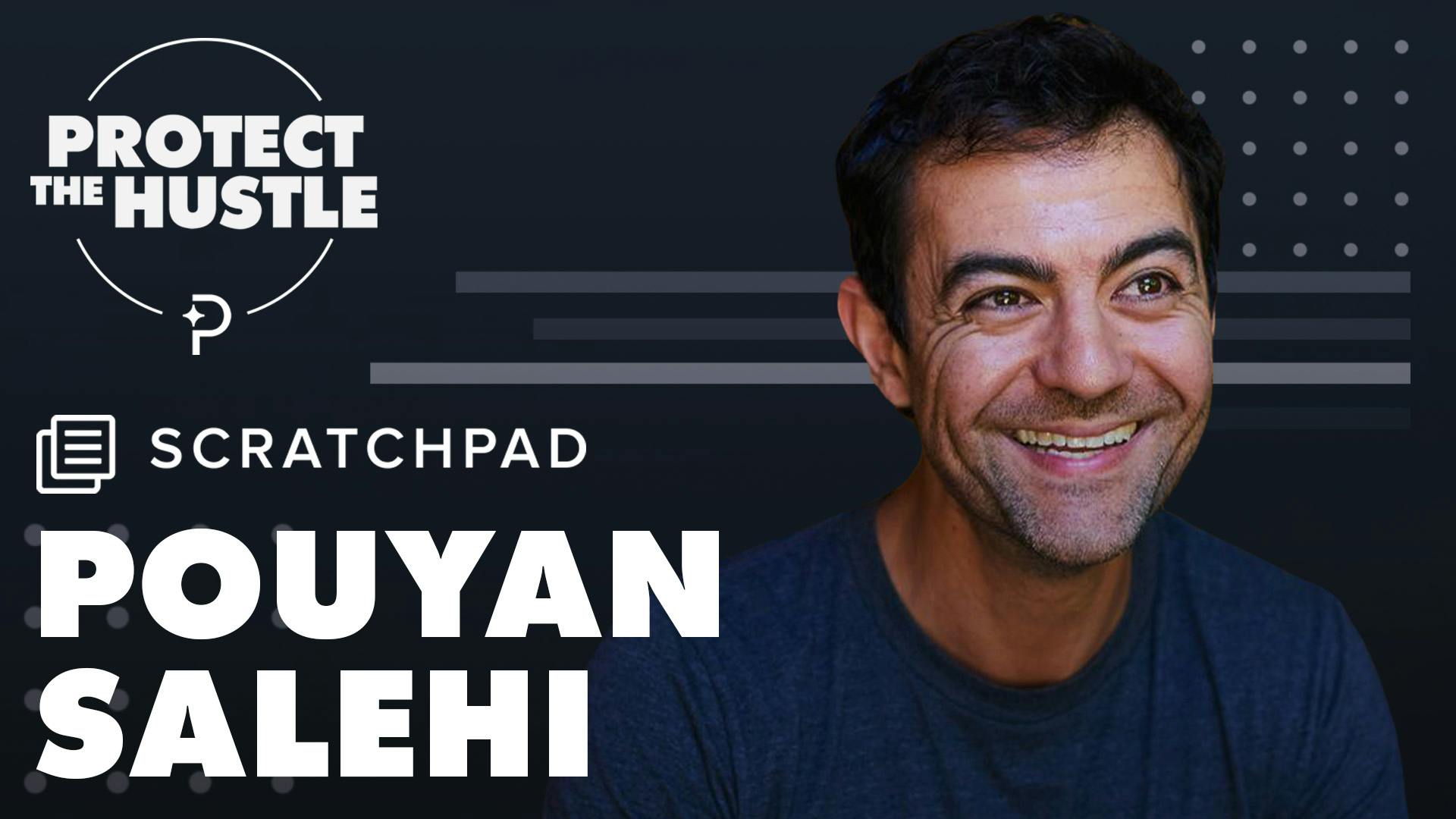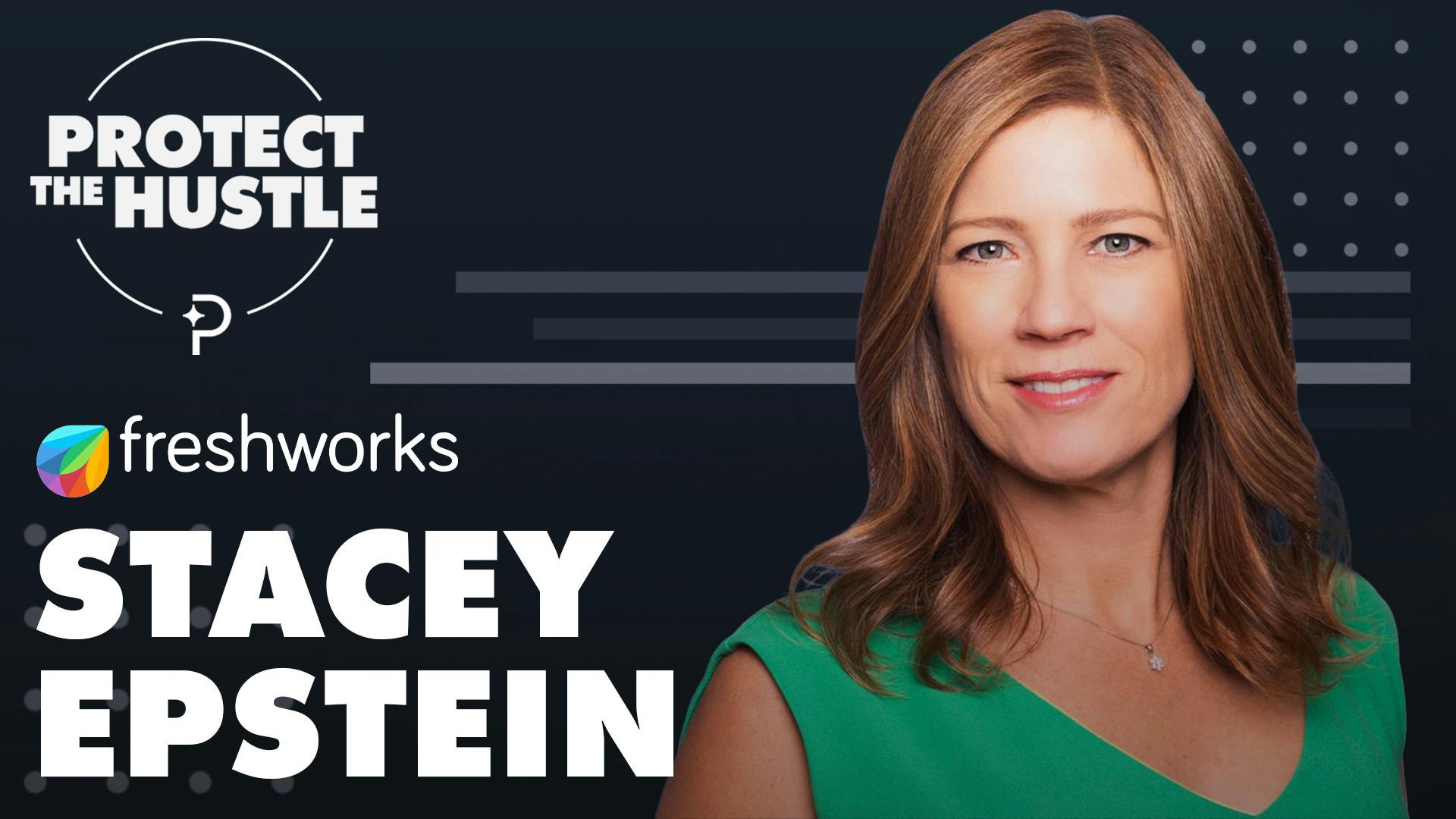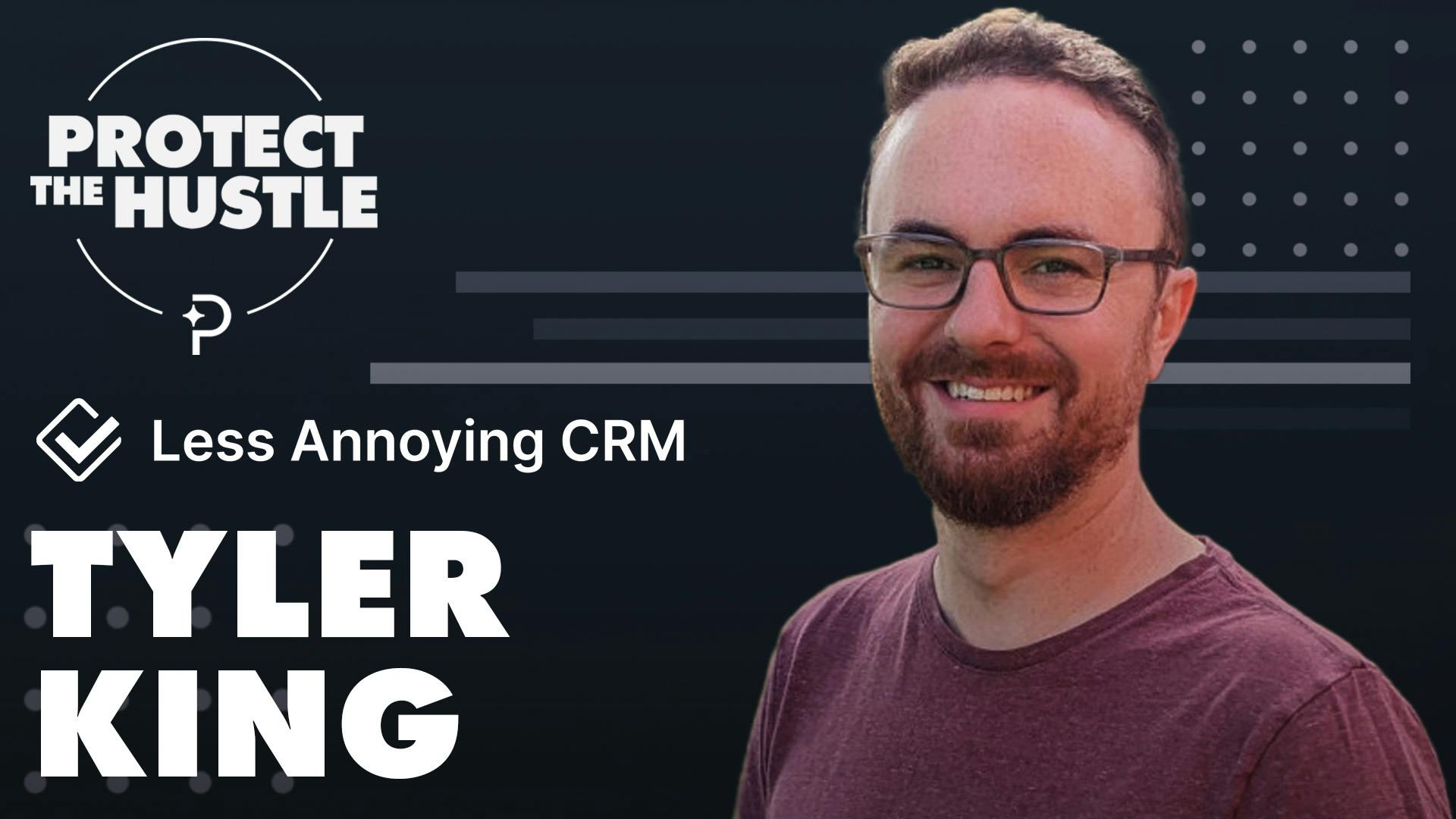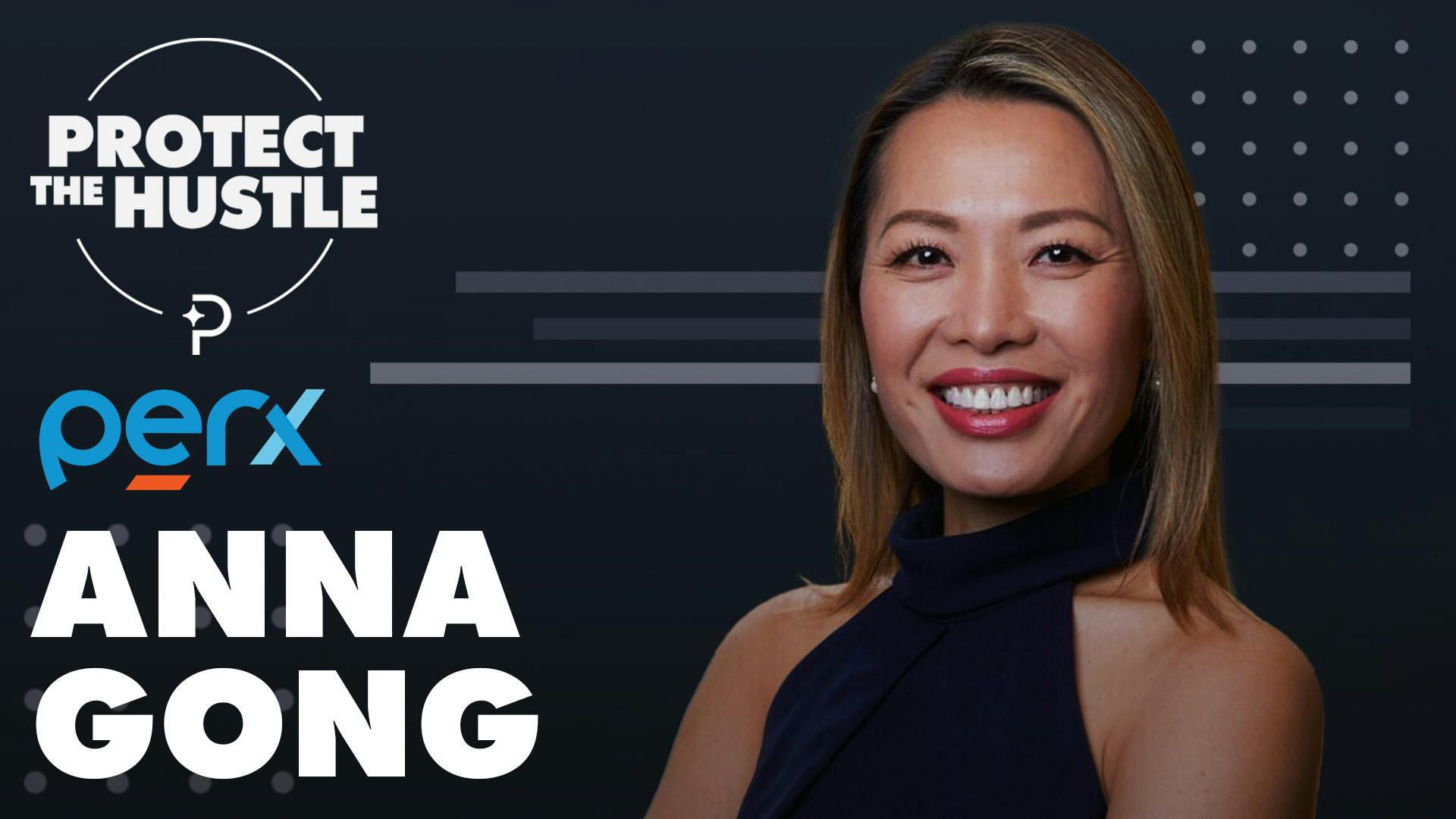
B-Side: Not all who cancel are lost: How to win back customers
Not all who cancel are lost
When a customer breaks up with you, it’s hard not to take it personally.
You worked so hard to woo them.
You spent the CAC.
You even answered that support ticket on Saturday night when you were supposed to be with your friends.
Then - CLICK.
Without explanation. They’re gone.
We’ve all lost customers.
We’ve all probably lost a lot of customers. Yet, what if I told you that not all who cancel are lost? What if I showed you that you could woo back 4 out of every 10 customers who hit that horrific cancel button?
You’d probably act like most jilted lovers going through a breakup and scream cry that, “they’re never coming back!”
But fret not, there’s hope.
Let’s show you what the best subscription companies in the world are doing by:
- Going through why this is even possible
- Who to target to recover
- How to actually recover these lost customers
- And how to re-onboard them so they stick around into the long term
But first, why is it even possible to save customers who’ve already left you?
The subscription business model is the first commerce model in history to bake the relationship with the customer into how you make money. It’s truly remarkable and we don’t give enough credit to the innovation.
Prior to the subscription model, you either had only one option as a consumer, which was the corner store of the 1800s, or you had all the options, and businesses had to compete for you post WWII mass consumerism and the internet era,
Businesses still have to compete for you with subscriptions, but value is much more equalized. Each month the company provides value for a set price. Assuming you agree that value is worth that price, you stick around, continuing to use the product. In return, businesses get the benefit of knowing that each month they aren’t starting at $0, but have a nice crop of subscribers. It’s a beautiful equilibrium, albeit one that’s still slightly favoring the customers.
So what does this have to do with customers who churn?
Value in a relationship changes over time. You add more features, the value formula goes up and the customer is happier. You had massive AWS outages, the value formula goes down and the customer is less happy.
We can reflect this phenomena on a spectrum like the one below. On the furthest right section we have customers who feel like they’re getting so much value they’re telling all their friends about your product. On the furthest left, these people have churned long ago and feel they had such a bad experience they’re talking crap about you to everyone. In the middle we have the point where someone chooses to cancel.
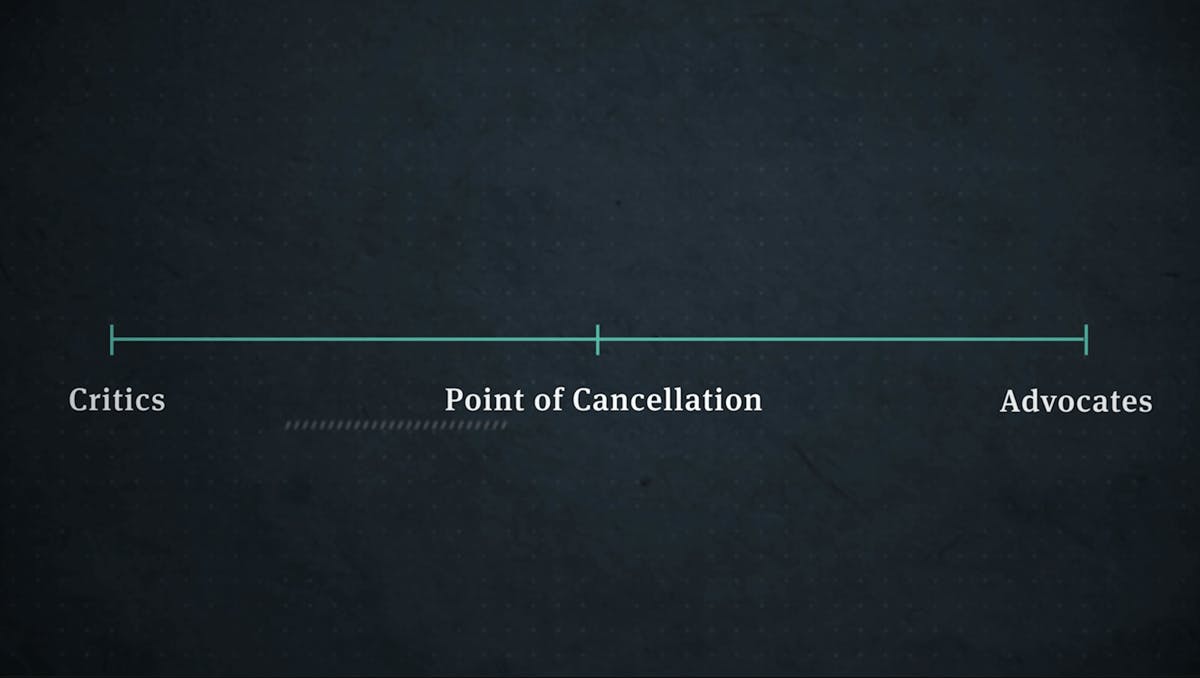
We’re pretty good at measuring value. We do customer research. We create personas. Our most valued personas use the right integrations, fit a certain business profile, and love our product. Our anti-personas need features you’re not going to develop, are in verticals you don’t support, and probably won’t even try your product.
Here’s the problem though. Personas aren’t individual people. Don’t get me wrong, they’re incredibly useful and you should have them. Yet, when it comes to churn there’s a myriad of reasons why someone churns out even if they fit your perfect persona.
A customer could churn because they’re going on vacation (and intend to come back). They could be dealing with budget issues on their end. Office politics may mean they need to try your competitor for a few months.
Value is calculated through a myriad of factors. Many of which you can’t control. To give you some data on this notion, since I know I tend to attract a skeptical audience, here’s a breakdown of churn reasons across a spectrum of B2B and consumer products that we categorized as in the company’s control: features, support problems, etc. And those that weren’t: budget, timing, etc.
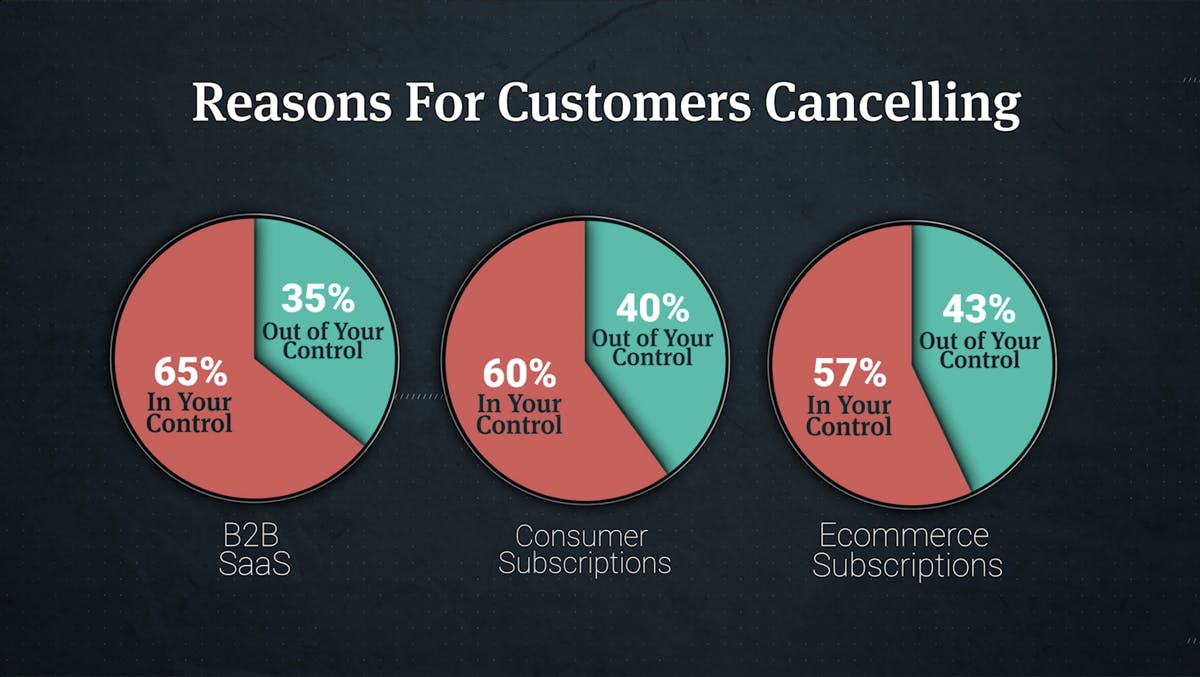
Four out of 10 cancellations have nothing to do with you. That’s a sobering data point.
What do we do with this data? What’s the point?
Glad you asked. The answer is that your churn recovery strategy needs to fight at the individual level, not the persona level. When you fight at the persona level, you tend not to do anything, because you say things like, “Well if the product was valuable enough, they would have stuck around,” while at the same time rationalize through, “that customer just wasn’t for us.” While both of these statements can be true, they’re woefully incomplete.
Ok. So how do we fight at the individual level?
Let’s walk through how to implement proper customer reactivation campaigns that can recover anywhere between 10%-30% of those that’ve churned.
Win-back campaigns: How they get back customers who cancelled
A quick note on offboarding/cancellation flow:
A good mental model to use around reactivations is to think of this like a marketing campaign to people who already know you exist. You did the hardest part there, but now you have to win them back through messaging and offers. There are three big stages here: identification, win-back campaign, and re-onboarding.
Who do we actually target?
If you’re running a clunky version of reactivations, feel free to just “spray and pray” offers. It’s better than nothing and much better than most companies are doing. Yet, we want to be a bit more sophisticated (probably a lot more). The reason you want to do some basic segmentation is the same reason you want to do this on the acquisition side of the house—you’ll get better results if you align the right offer and messaging to the right type of buyer.
How do we know this works? Admittedly, we have a product—ProfitWell Retain—that now automatically does reactivation and win-back campaigns. We’ve found definitively that mapping your users for segmentation increases yield by 2-3x.
Retain does this (and you can do this) by identifying two main axes:
- Customer health scores: We built health scores based on engagement, financial history, firmagraphics, and a dozen other factors to categorize how likely a customer is to come back at the time the offer is about to be sent.
- Cancellation flow insights: Retain has a feature that collects data on why someone is cancelling. Retain then tries to save them, but if unsuccessful, the data gleaned gets factored into the win-back campaign.
To bring this to life a bit, a power user who loves the product, but needs a break would get a small offer. A customer who was already at-risk of churning who indicated they had a bad support experience would get a larger offer.
The point here is to align the right offer with the right messaging at the right time to the right customer.
Run the win-back campaign
After segmentation is completed (and in reality this should be running in realtime), you obviously need to message folks. We’ve found with ProfitWell Retain that a drip of two emails with one SMS text works really well. Here’s what should go into those emails:
- Plain text—always: Across a few million emails at this point, we’ve seen that plain text gets over 50% better engagement than highly designed marketing emails. Apologies to your design department. :)
- Whole number based offers: Don’t use percentages. Humans grasp whole numbers—$10 off, one month free, etc.—much better than something like 10% off. You’ll typically see 10%-20% higher take rates from whole number offers.
- Aligned copy: Remember, these are your former customers. You have a relationship with them. Bring in why they left and what they loved. Remind them of those new features.
- Offer size: Your margins will determine your limits, but folks who didn’t love your product typically require a larger offer to come back. Those who used you a long time normally just need a nudge.
- Frequency: One campaign every 45 days works well.
Here’s an example of a ProfitWell Retain email that hits up all these important aspects.
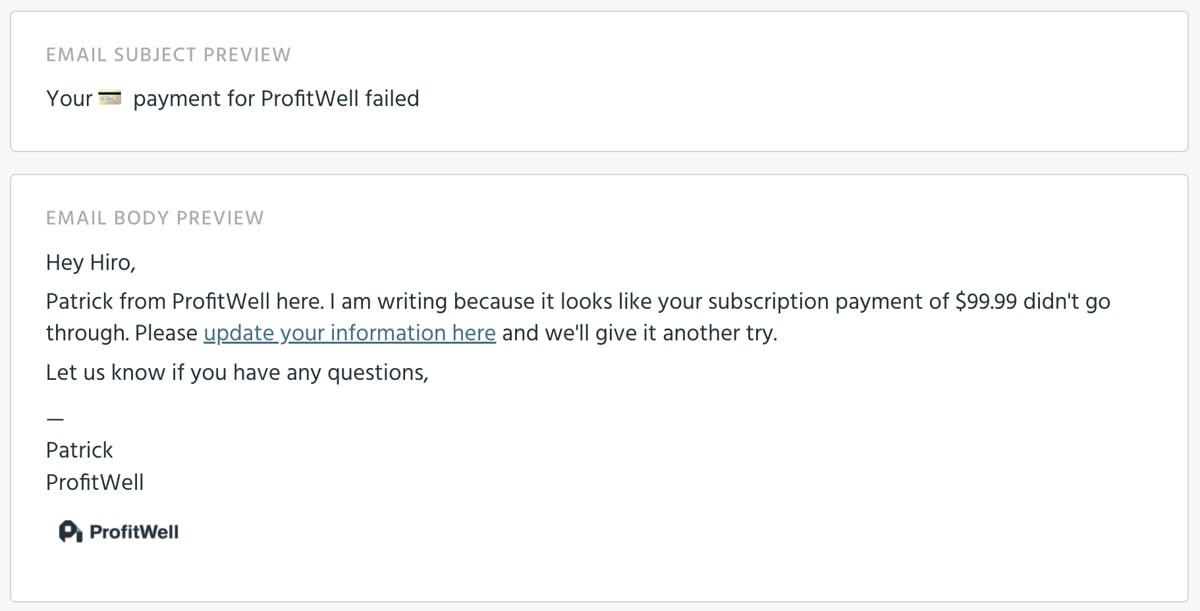
One other piece that’s incredibly important: do not make people log back in to then have to re-sign up to become a customer again. This increases the friction considerably.
Instead, make it one-click opt-in experience. With ProfitWell Retain, the user simply goes to a landing page where they opt back in and automatically picks up where they left off before they churned. If you can’t use ProfitWell Retain or build your own version of this feature, then simply have them reply to the email and handle through support. Making them go to the billing settings page will drop your win-back rate likely by half.
Re-onboarding
The concept of not treating them as a brand new user, brings us to the important point of making sure the customer goes through re-onboarding. Too many brands treat customers coming back as brand new, asking them the same questions, treating them as if they know nothing about the product, etc.
I’m not saying you need to do anything complicated, but set up an onboarding flow that recognizes where they left off before. Some of the best brands have a whole different email drip that not only reorientates the customer with the product, but collects information as to why they came back. The very best brands will get on the phone with as many of these customers as possible to learn more about why they left and why they came back.
Technically, not treating these customers as new can get tough, because it’s easier to just delete their information and then have them create a new account. To help here we created something in ProfitWell Retain called “Lockout” that basically locks out anyone who’s churned or hasn’t updated their credit card. You can create your own setup similarly.

Not all who churn are lost
One of the hardest aspects of growth is getting your target buyer to know you exist. There’s so much noise in our markets and buyers are entrenching themselves more and more. While customers who cancel and churn are obviously painful, the silver lining is they at least know you exist.
Make sure you’re taking advantage of that silver lining by at least having basic win-back and reactivation campaigns. Combined with other areas of tactical churn, there’s little that can stop your momentum as the cohorts stack up.
Do us a favor?
Part of the way we measure success is by seeing if our content is shareable. If you got value from this episode and write up, we'd appreciate a share on Twitter or LinkedIn.
00:00:00:21 - 00:00:03:15
We are so over. You live here. I hate you.
00:00:03:16 - 00:00:06:04
We should stop seeing each other
when a customer breaks up with you.
00:00:06:04 - 00:00:08:22
It's hard not to take it personally.
00:00:10:20 - 00:00:12:03
You worked so hard to woo them.
00:00:12:03 - 00:00:13:04
You spent the cash.
00:00:13:04 - 00:00:15:06
You even answered
that support ticket on Saturday night
00:00:15:06 - 00:00:17:05
when you were supposed to be out
with your friends.
00:00:17:05 - 00:00:22:01
And then one year without explanation,
they are gone.
00:00:23:13 - 00:00:24:04
Well,
00:00:25:03 - 00:00:25:08
yeah.
00:00:25:13 - 00:00:28:03
What if I told you
that not all who cancel are lost?
00:00:28:11 - 00:00:30:01
What if I showed you
that you could woo back
00:00:30:01 - 00:00:33:05
four out of every ten customers
who hit that horrific cancel button?
00:00:33:23 - 00:00:36:06
You probably act just like jilted lover
and say
00:00:36:11 - 00:00:38:13
they're never coming back.
00:00:39:08 - 00:00:40:09
But fret not.
00:00:40:09 - 00:00:43:08
There's hope that show
you with the best subscription companies
00:00:43:08 - 00:00:46:19
in the world are doing by going through
why this is even possible.
00:00:47:08 - 00:00:51:02
Who to target to recover how
to actually recover those lost customers
00:00:51:11 - 00:00:54:09
and how to re onboard them
so they stick around into the long term.
00:00:54:22 - 00:00:56:19
So before we get into all that,
I need you to comment
00:00:56:19 - 00:01:00:00
below your best breakup remedy
because if I don't get
00:01:00:00 - 00:01:03:03
100 comments,
Jenny said our engagement is probably off.
00:01:03:14 - 00:01:05:11
Not sure exactly how I feel.
00:01:05:11 - 00:01:07:23
But first,
why is it even possible to save customers
00:01:07:23 - 00:01:09:04
who have already left you,
00:01:09:04 - 00:01:10:01
much like a romantic
00:01:10:01 - 00:01:13:12
relationship value in a subscription
relationship changes over time.
00:01:13:19 - 00:01:15:21
You add more features or increase
your brand equity.
00:01:15:21 - 00:01:17:13
That value formula goes up.
00:01:17:13 - 00:01:18:22
The customer is happier
00:01:18:22 - 00:01:22:03
you have massive AWG outages
and haven't shipped anything in months.
00:01:22:12 - 00:01:23:21
The value formula goes down.
00:01:23:21 - 00:01:25:11
Your customer is less happy.
00:01:25:11 - 00:01:27:01
We're pretty good at measuring value.
00:01:27:01 - 00:01:28:03
We do customer research.
00:01:28:03 - 00:01:30:13
We create personas
and our most valued personas.
00:01:30:13 - 00:01:33:21
Use the right integrations, fit a certain
business profile, and love our product.
00:01:34:05 - 00:01:37:05
Our anti personas need features
you're not going to develop for years
00:01:37:10 - 00:01:40:07
and are in verticals you don't support
and even probably won't even try
00:01:40:07 - 00:01:41:07
the product.
00:01:41:08 - 00:01:42:12
Here's the problem though.
00:01:42:12 - 00:01:44:17
Personas aren't individual people.
00:01:44:17 - 00:01:47:02
Don't get me wrong, they're incredibly
useful to make decisions.
00:01:47:09 - 00:01:49:12
Yet when it comes to churn,
there's a myriad of reasons
00:01:49:12 - 00:01:52:02
why someone cancels,
even if they fit your perfect persona.
00:01:52:16 - 00:01:55:22
This means our ideal personas are bunched
up on the right side of the spectrum,
00:01:56:02 - 00:01:59:04
but are still spread
throughout An ideal customer could churn
00:01:59:04 - 00:02:01:18
because they're going on vacation
and intend to come back.
00:02:01:23 - 00:02:04:14
Another could be dealing
with budget issues and need a break.
00:02:04:21 - 00:02:07:21
Others may have office politics
forcing them to try your competitor
00:02:07:21 - 00:02:09:02
for a few months.
00:02:09:02 - 00:02:11:11
Many of these value factors
you can't control.
00:02:11:11 - 00:02:15:01
And to give you some data, since I know
we tend to attract a skeptical audience.
00:02:15:10 - 00:02:19:07
Here's a breakdown of churn reasons across
a spectrum of B2B and consumer products
00:02:19:12 - 00:02:23:18
that we categorize as customers, control
features, support problems, etc.
00:02:23:23 - 00:02:26:15
and those that aren't budget timing, etc.
00:02:27:01 - 00:02:30:16
Four out of ten cancelations
have nothing to do with you.
00:02:31:05 - 00:02:33:00
That's a sobering data point.
00:02:33:00 - 00:02:35:13
What do we do with this data,
and what's ultimately the point
00:02:35:13 - 00:02:36:21
of everything that we're talking about?
00:02:36:21 - 00:02:38:17
And of course, I'm glad you asked.
00:02:38:17 - 00:02:41:16
The answer is, is that your churn recovery
strategy means you fight
00:02:41:16 - 00:02:44:14
at an individual level,
not at the persona level.
00:02:45:00 - 00:02:47:14
When you fight at the persona level,
you tend not to do anything
00:02:47:14 - 00:02:49:00
because you say things like,
00:02:49:00 - 00:02:51:12
Well, if the product was valuable enough,
they would have stuck around
00:02:51:20 - 00:02:55:08
while at the same time rationalizing
through that customer just wasn't for us.
00:02:55:20 - 00:02:57:12
Well,
both of these statements can be true.
00:02:57:12 - 00:02:59:10
They are woefully incomplete.
00:02:59:10 - 00:03:01:14
So how do we fight
at the individual level?
00:03:01:22 - 00:03:05:15
The quick answer is win back campaigns,
but the longer answer is
00:03:05:15 - 00:03:06:06
let's walk through
00:03:06:06 - 00:03:09:10
how to actually recover ten to 30%
of those customers who have canceled
00:03:10:04 - 00:03:12:01
when back campaigns
are actually pretty simple
00:03:12:01 - 00:03:14:03
when you think about them
just as marketing campaigns,
00:03:14:03 - 00:03:17:14
the people who already know you exist,
you already did the hardest part.
00:03:17:15 - 00:03:21:14
Yes, they canceled, but they know you
exist and just need an offer to come back.
00:03:22:01 - 00:03:23:08
Three big stages here.
00:03:23:08 - 00:03:27:17
Identifying the right targets the actual
win back campaign and re onboarding.
00:03:28:08 - 00:03:30:19
So first up, who do we actually target?
00:03:30:19 - 00:03:31:20
If you want to be basic,
00:03:31:20 - 00:03:35:00
you can just spray and pray offers
to every single customer who cancel.
00:03:35:08 - 00:03:36:06
You'll come off desperate.
00:03:36:06 - 00:03:38:06
But it's better than doing
absolutely nothing.
00:03:38:16 - 00:03:42:01
We want to be more sophisticated, though,
because even with basic segmentation,
00:03:42:06 - 00:03:44:11
you'll get better results
by aligning the right offer.
00:03:44:11 - 00:03:46:12
And message to the right customer.
00:03:46:12 - 00:03:48:01
How do we know this works well?
00:03:48:01 - 00:03:50:12
Admittedly,
we have a product called Profitable Retain
00:03:50:16 - 00:03:53:00
that now automatically does
win back campaigns.
00:03:53:06 - 00:03:56:11
We found definitively
that mapping your users for segmentation
00:03:56:17 - 00:04:00:02
increases yield by two to three X,
which obviously is a ton.
00:04:00:11 - 00:04:03:10
Retain does this and you can do this too
by identifying
00:04:03:10 - 00:04:06:09
two main axes
First is customer health score.
00:04:06:15 - 00:04:09:10
We built health scores
based on engagement, financial history,
00:04:09:10 - 00:04:13:04
former graphics, and a dozen other factors
to categorize how likely a canceled
00:04:13:04 - 00:04:17:05
customer is to come back The second piece
here is Cancelation Flow Insights.
00:04:17:23 - 00:04:21:05
As a feature that collects data on
why someone is canceling retained,
00:04:21:05 - 00:04:22:04
then tries to save them.
00:04:22:04 - 00:04:25:16
But if unsuccessful, that data
gets factored into the win back campaign
00:04:26:03 - 00:04:27:11
to bring this to life a little bit.
00:04:27:11 - 00:04:30:02
A power user who loves the product
and just needs a break
00:04:30:06 - 00:04:33:19
would get a very small offer,
whereas a customer who was already at risk
00:04:33:19 - 00:04:36:13
of churning, who indicated
that they had a bad support experience,
00:04:36:18 - 00:04:38:13
would then get a larger offer.
00:04:38:13 - 00:04:40:15
The point here is to align the right offer
00:04:40:15 - 00:04:43:16
with the right messaging at the right time
to the right customer.
00:04:44:13 - 00:04:47:18
Next up, we want to run the win back
campaign after segmentation
00:04:47:18 - 00:04:50:13
is completed and reality
that should be running in real time.
00:04:50:19 - 00:04:52:18
You obviously need to message folks.
00:04:52:18 - 00:04:54:15
We found with proof
will retain that a drip
00:04:54:15 - 00:04:58:11
campaign of two emails with one SMS
text works really, really well.
00:04:58:22 - 00:05:00:16
Here's what should go into those emails.
00:05:00:16 - 00:05:03:17
Plain text always across
a few million emails at this point,
00:05:03:17 - 00:05:05:07
we have found that plain text gets over
00:05:05:07 - 00:05:08:12
50% better engagement than highly designed
marketing emails.
00:05:09:04 - 00:05:10:19
Poll number based offers.
00:05:10:19 - 00:05:12:00
Don't use percentages.
00:05:12:00 - 00:05:12:17
Humans graphs.
00:05:12:17 - 00:05:15:07
Whole numbers, $10 off, one month
free, etc..
00:05:15:12 - 00:05:17:15
Much better than something like 10% off.
00:05:17:21 - 00:05:21:12
You'll typically see ten to 20% higher
take rates from the whole number offers
00:05:21:16 - 00:05:24:20
versus the percentage
based on those aligned copy.
00:05:25:03 - 00:05:27:04
Remember, these are your former customers.
00:05:27:04 - 00:05:28:20
You have a relationship with them.
00:05:28:20 - 00:05:31:00
Bring in why they left
and what they loved.
00:05:31:00 - 00:05:33:18
Remind them of those new features
Offer size.
00:05:33:19 - 00:05:37:00
Your margins will determine your limits,
but folks who didn't love your product
00:05:37:00 - 00:05:39:06
typically require
a larger offer to come back.
00:05:39:14 - 00:05:42:15
Those who used you a long time
normally just need a little bit of a nudge
00:05:43:05 - 00:05:44:06
frequency.
00:05:44:06 - 00:05:47:17
One campaign every 45 days works really,
really well.
00:05:48:04 - 00:05:51:02
Oh, and one final note. Do not
00:05:52:01 - 00:05:52:16
do not.
00:05:52:16 - 00:05:57:19
I said do not make people log back into re
sign up to become a customer again.
00:05:58:05 - 00:06:00:04
This increases the friction considerably.
00:06:00:04 - 00:06:02:17
Instead,
make it a one click opt in experience
00:06:03:00 - 00:06:05:19
and with proper will retain
the user simply goes to a landing page
00:06:05:19 - 00:06:06:21
where they opt back in
00:06:06:21 - 00:06:09:14
and automatically picks up
where they left off before they churn.
00:06:09:23 - 00:06:13:00
If you can't use proof, will retain
or build your own version of this feature,
00:06:13:05 - 00:06:16:06
then simply have them reply to the email
and handle this all through support.
00:06:16:13 - 00:06:17:13
Making them go to the billing
00:06:17:13 - 00:06:20:10
settings page will drop your win back
rate likely by half
00:06:21:13 - 00:06:22:06
on that note.
00:06:22:06 - 00:06:23:23
One more actual thing here.
00:06:23:23 - 00:06:26:01
Make sure you set up re onboarding.
00:06:26:01 - 00:06:28:19
Too many brands
treat customers coming back as brand new,
00:06:28:19 - 00:06:29:08
asking them
00:06:29:08 - 00:06:30:06
the same questions,
00:06:30:06 - 00:06:33:01
treating them as if they don't know
anything about the product, etc.
00:06:33:10 - 00:06:36:08
You don't have to do anything complicated,
but set up an onboarding flow
00:06:36:08 - 00:06:38:11
that recognizes where that user left off.
00:06:38:18 - 00:06:41:12
Some of the best brands out there
have a whole different email drip
00:06:41:12 - 00:06:45:09
that not only re-orientate the customer
with the product, but collects information
00:06:45:09 - 00:06:46:20
as to why they came back.
00:06:46:20 - 00:06:49:05
The very best brands out
there will get on the phone
00:06:49:05 - 00:06:51:04
with as many of these customers
as possible
00:06:51:04 - 00:06:54:09
to learn more about why they left and
of course, why they ended up coming back.
00:06:54:21 - 00:06:58:17
Technically, not treating these customers
as new can get tough because it's easier
00:06:58:17 - 00:07:02:11
to just delete their information and have
them create a brand new account to help.
00:07:02:11 - 00:07:06:04
There we created something in profile
called Lock Out that basically locks out
00:07:06:04 - 00:07:08:16
anyone who's turned
or who hasn't updated their credit card
00:07:12:12 - 00:07:12:20
One of the
00:07:12:20 - 00:07:15:22
hardest aspects of growth
is getting your buyer to know you exist.
00:07:16:06 - 00:07:19:10
There's so much noise in our markets
and buyers are entrenching themselves
00:07:19:10 - 00:07:20:15
more and more and more.
00:07:20:15 - 00:07:23:00
Customers who cancel and churn
are obviously painful.
00:07:23:05 - 00:07:25:20
The silver lining is they know you exist.
00:07:26:07 - 00:07:27:12
Make sure you're taking advantage
00:07:27:12 - 00:07:30:12
of that silver lining by at least
having basic win back campaigns
00:07:30:19 - 00:07:33:00
and combined
with other areas of tactical churn,
00:07:33:00 - 00:07:34:23
there's little
that can stop your momentum.
00:07:34:23 - 00:07:36:20
Of course, as these cohorts stack up,
00:07:36:20 - 00:07:38:11
I'm sure you have a ton of opinions
about this,
00:07:38:11 - 00:07:42:04
so let me know that I inspired a Rethink
Your Reactivation and win back strategy.
00:07:42:10 - 00:07:43:22
Are you already hitting up
your team members
00:07:43:22 - 00:07:45:20
to send some more win back campaigns?
00:07:45:20 - 00:07:48:07
Any strategies that have worked
well for you that I didn't mention?
00:07:48:15 - 00:07:51:17
Leave a comment below and as diehard
profile fans know, especially
00:07:51:17 - 00:07:55:01
if you've been to a webinar or two,
I answer every single question.
00:07:55:01 - 00:07:56:20
I respond to every single comment.
00:07:56:20 - 00:07:58:21
So I'll see you down there
in the comments and replies

